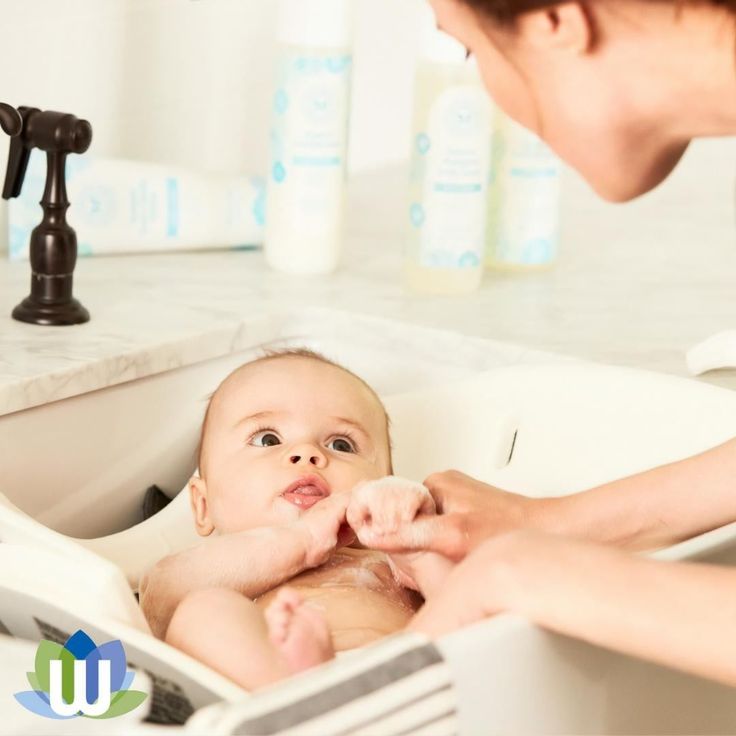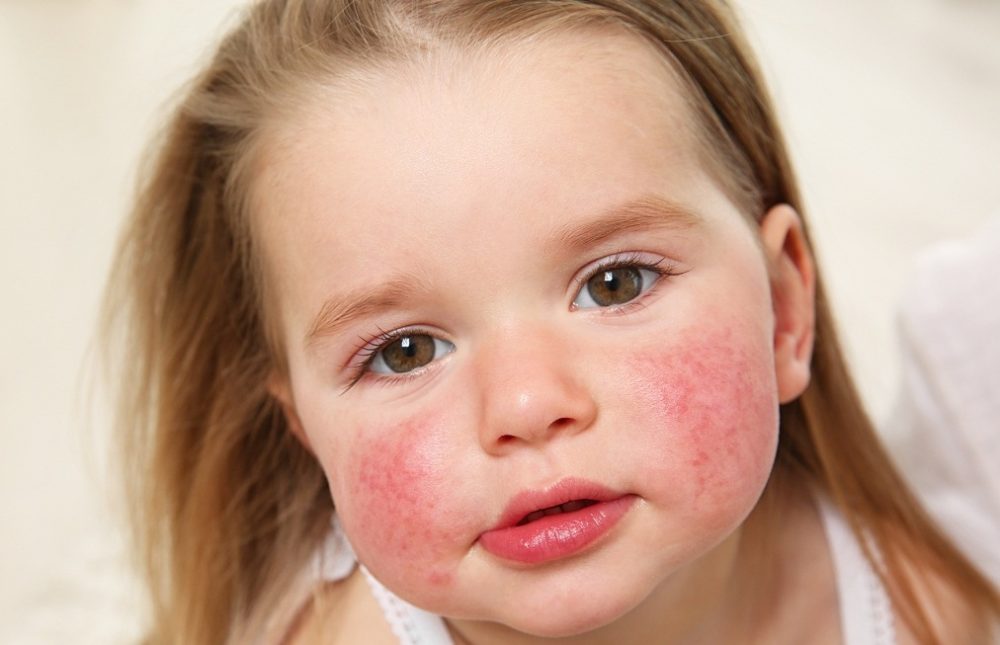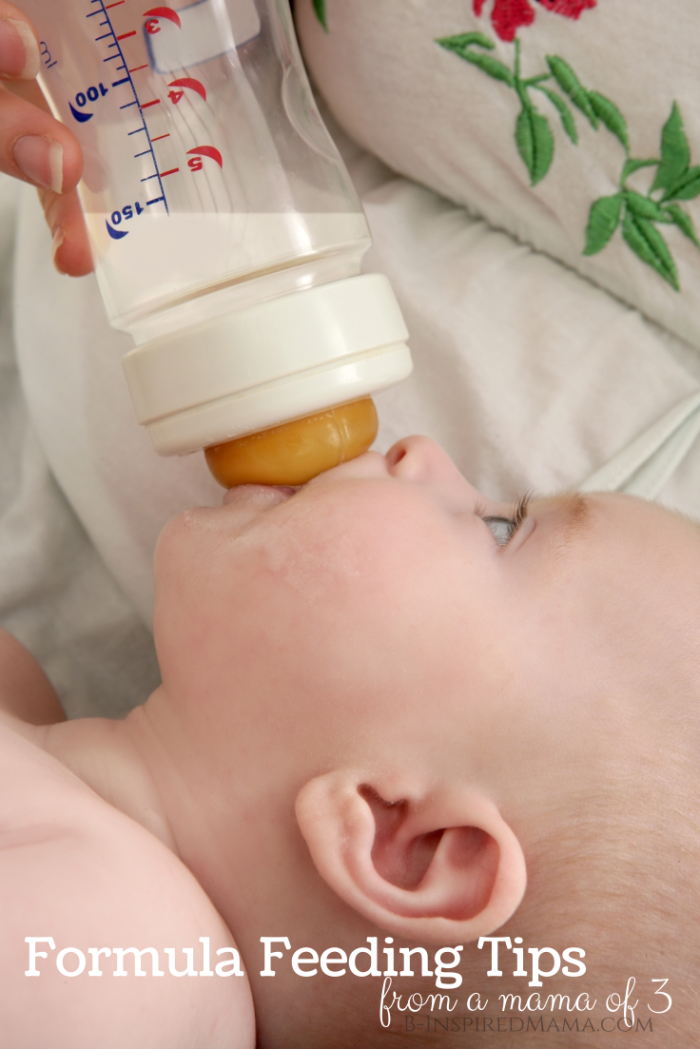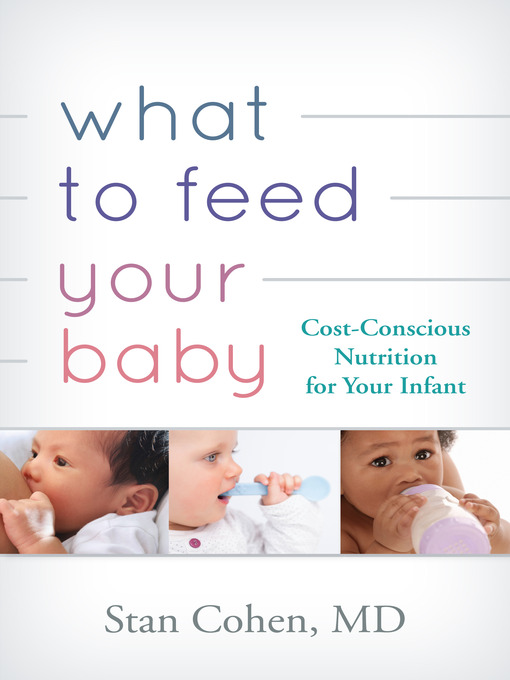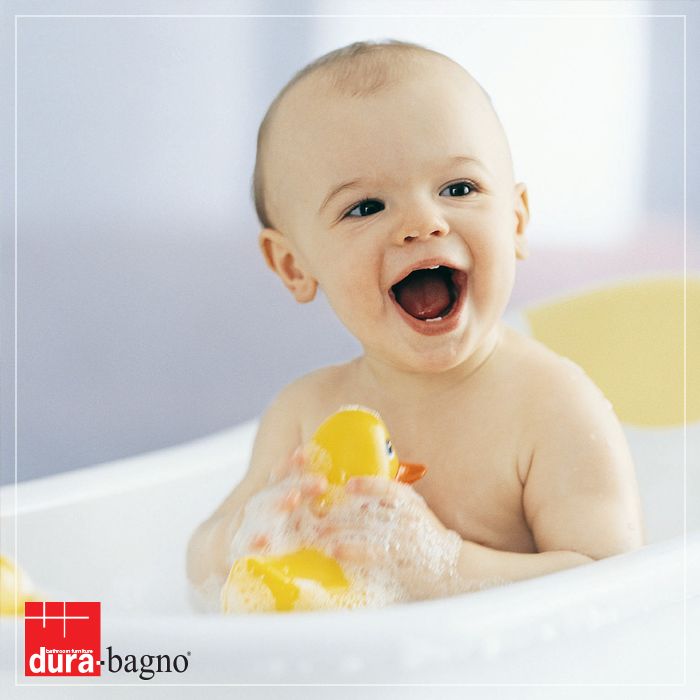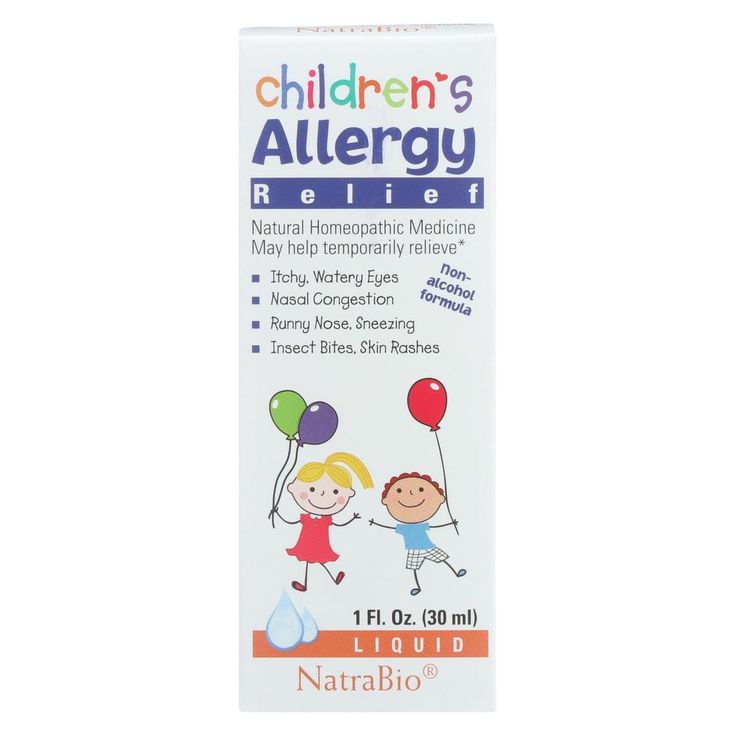Baby bath time before or after feeding
Washing and bathing your baby
You don't need to bathe your baby every day. You may prefer to wash their face, neck, hands and bottom instead. This is often called "topping and tailing".
Choose a time when your baby is awake and content. Make sure the room is warm. Get everything ready beforehand. You'll need a bowl of warm water, a towel, cotton wool, a fresh nappy and, if necessary, clean clothes.
Topping and tailing tips- Hold your baby on your knee or lay them on a changing mat. Take off all their clothes, apart from their vest and nappy, and wrap them in a towel.
- Dip the cotton wool in the water (make sure it doesn't get too wet) and wipe gently around your baby's eyes from the nose outward, using a fresh piece of cotton wool for each eye. This is so that you don't transfer any stickiness or infection from one eye to another.
- Use a fresh piece of cotton wool to clean around your baby's ears, but not inside them. Never use cotton buds to clean inside your baby's ears. Wash the rest of your baby's face, neck and hands in the same way and dry them gently with the towel.
- Take off the nappy and wash your baby's bottom and genital area with fresh cotton wool and warm water. Dry very carefully, including between the skin folds, and put on a clean nappy.
- It will help your baby to relax if you keep talking while you wash them. The more they hear your voice, the more they'll get used to listening to you and start to understand what you're saying.
You don't need to bathe your baby every day, but if they really enjoy it, there's no reason why you shouldn't.
It's best not to bathe your baby straight after a feed or when they're hungry or tired.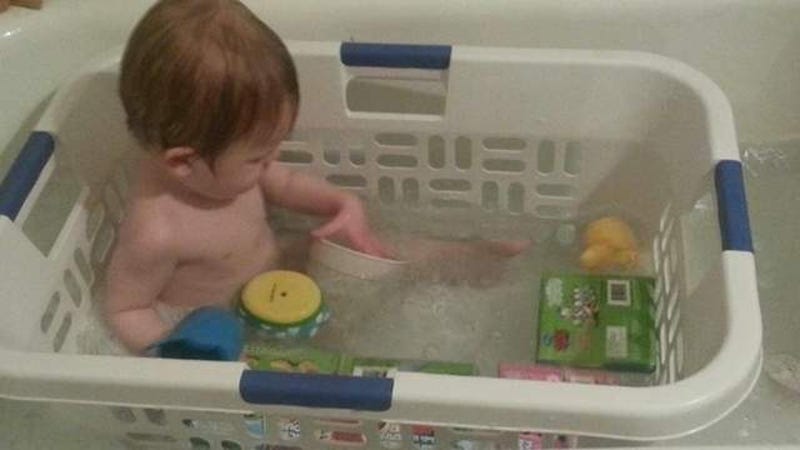 Make sure the room you're bathing them in is warm.
Make sure the room you're bathing them in is warm.
Have everything you need at hand: a baby bath or clean washing-up bowl filled with warm water, 2 towels, a clean nappy, clean clothes and cotton wool.
- The water should be warm, not hot. Check it with your wrist or elbow and mix it well so there are no hot patches.
- Don't add any liquid cleansers to the bath water. Plain water is best for your baby's skin in the first month.
- Hold your baby on your knee and clean their face.
- Next, wash their hair with plain water, supporting them over the bowl.
- Once you've dried their hair gently, you can take off their nappy, wiping away any mess.
- Lower your baby gently into the bowl or bath using one hand to hold their upper arm and support their head and shoulders. Then use the other hand to gently swish the water over your baby without splashing.
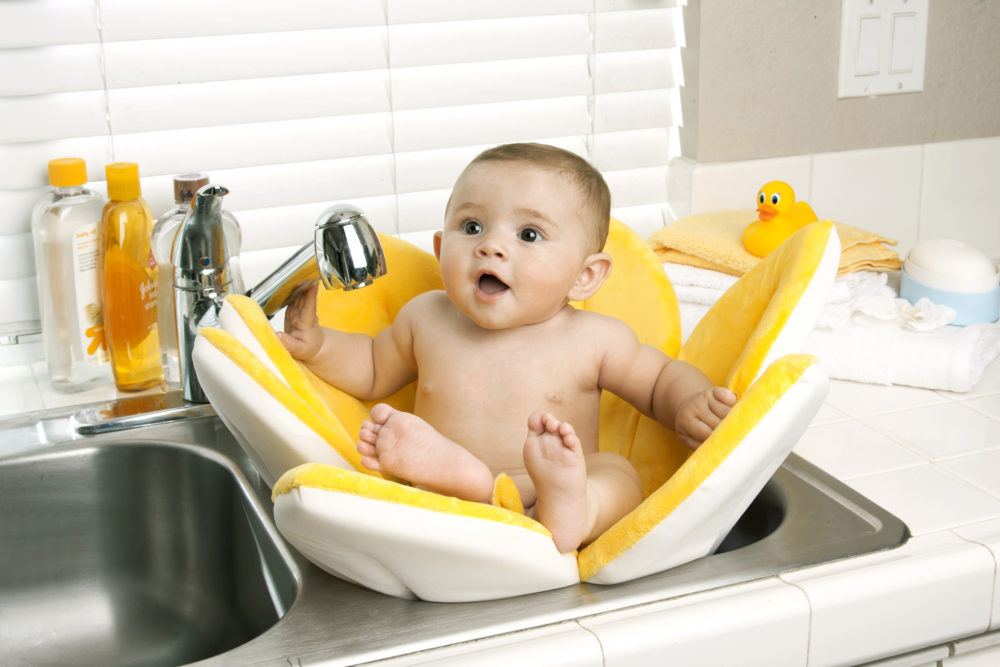
- Keep your baby's head clear of the water.
- Never leave your baby alone in the bath, not even for a second.
- Lift your baby out and pat them dry, paying special attention to the creases in their skin.
- This is a good time to massage your baby. Massage can help them relax and sleep. Avoid using any oils or lotions until your baby is at least a month old.
- If your baby seems frightened of bathing and cries, try bathing together. Make sure the water isn't too hot. It's easier if someone else holds your baby while you get in and out of the bath.
Video: how do I bath my baby?
In this video, a midwife shows you how to bath your baby properly.
Media last reviewed: 4 October 2022
Media review due: 4 October 2025
Some babies are born with long nails and it's important to cut them in case they scratch themselves.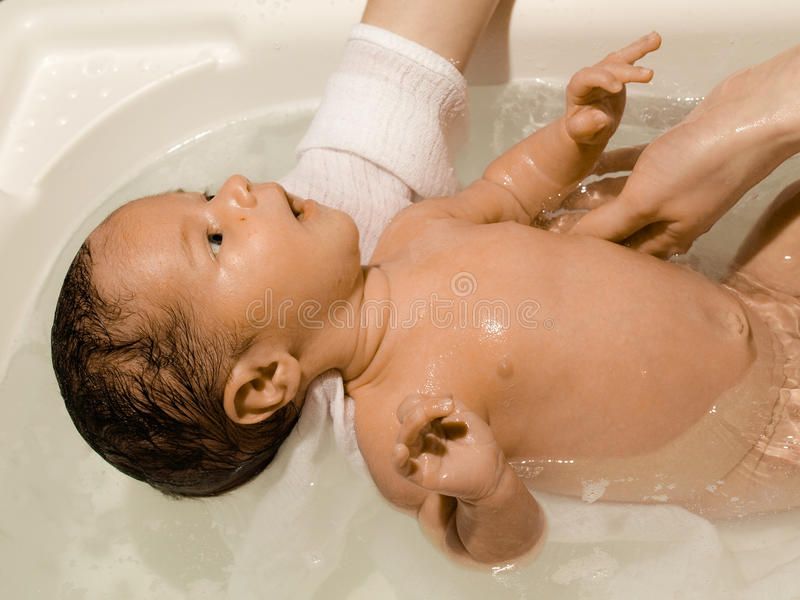 You can buy special baby nail clippers or small, round-ended safety scissors. Or you could try filing them down with a fine emery board instead
You can buy special baby nail clippers or small, round-ended safety scissors. Or you could try filing them down with a fine emery board instead
- Baby sleep tips
- Changing your baby's nappy
- How to soothe a crying baby
Page last reviewed: 15 September 2021
Next review due: 15 September 2024
How Long After Feeding Should I Bathe Baby? (With 4 Practical Tips)
Like the stereotypical advice to avoid swimming soon after eating, some new parents may hear that they should allow time after feeding before bathing their baby. Do you really need to wait before bathing your baby? And how long should you wait?
It is okay to bathe your baby at any time of day but when bathing your baby after feeding, wait at least 30 minutes (or, ideally, 1-2 hours) to allow your little one to digest their meal and avoid spit-ups or discomfort. You may prefer to bathe your baby before their last meal or even shortly before it. Either way, make sure your baby stays upright in the bathtub to avoid digestive problems.
You may prefer to bathe your baby before their last meal or even shortly before it. Either way, make sure your baby stays upright in the bathtub to avoid digestive problems.
Read on to learn more about incorporating bath time into your nightly routine, when to bathe before feeding, when to bathe after feeding, and tips for a successful bath after a meal.
Table of Contents
Why shouldn’t you bathe a baby after a feed?
Some parents choose to give their baby a bath every evening as part of a nightly bedtime routine. Others prefer to bathe their little ones during the day or whenever they get dirty.
For both parenting styles, a key concern is whether or not there are any issues with bathing a baby just after a feeding.
Is it just like swimming?
Ideally, it is recommended that babies wait 1-2 hours after feeding before having a bath because taking a bath raises your body temperature, affects your circulation, and diverts energy away from digestion.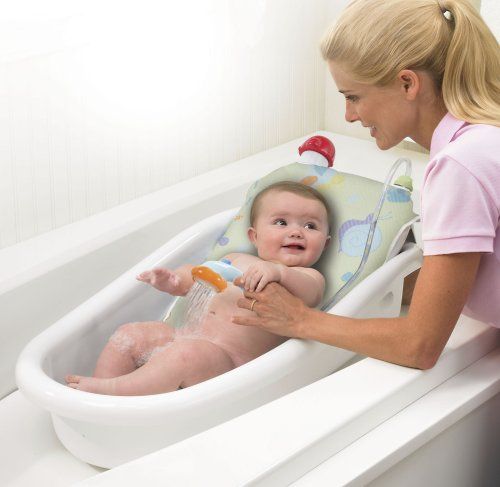
This is not a major issue for most people, but for newborns and colicky babies, rescheduling bath time may be a necessary accommodation.
Best baby routine: bath or feed first?
The best routine for your baby will depend on what works best for your family and which schedule incorporates your little one’s bedtime preferences. For example, if your baby can only fall asleep while nursing, then the bath will have to come first.
On the other hand, there are some advantages to bathing your baby after feeding. It definitely offers the quickest way to clean up your baby after a bottle or nursing session and deal with any spit-up. Your baby may also be more cooperative and ready for a bath if their stomach is full and are no longer hungry.
Some babies enjoy baths and want to play. Others become relaxed and ready for bed, while others cry and don’t enjoy bath time. If you have a baby who gets very excited during bath time, bathing first will make more sense for your routine. If you have a baby who hates getting a bath, you will also want to bathe them first to not upset their stomach by crying.
If you have a baby who hates getting a bath, you will also want to bathe them first to not upset their stomach by crying.
Another consideration is that if your little one suffers from colic, reflux, or other feeding issues, it may not make sense to bathe them after eating, as they may need extra time to allow their stomach to settle.
Should you bathe a newborn before or after feeding?
Baths are very calming and can be a great way to help your newborn settle for bedtime and even sleep through the night. Newborns are still acclimating to life outside the womb, and a warm, soothing bath can help replicate it. Therefore, many parents choose to schedule a bath as the last event for the day.
Newborns, in particular, may experience issues with baths after feeding due to the need for them to assume a reclining position in the tub. Since they can’t yet sit up on their own as older babies can, the likelihood of reflux issues is higher. Just as adults can have issues with lying down just after eating, it may not be the best idea to lay your little one down for a bath after a feeding.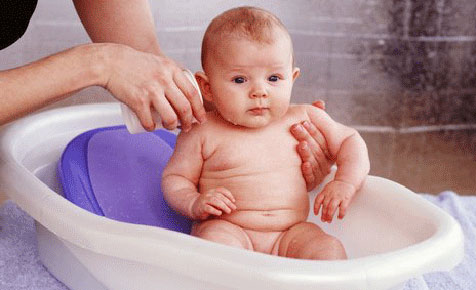
Some newborns also need to be burped extensively after each feeding, which would make a post-meal bath more cumbersome. For these babies, getting bath time out of the way before an evening feeding session makes more sense. This is also the case for babies who have trouble settling and prefer to nurse or suckle a bottle to fall asleep.
Newborns often fall asleep while eating, so if a daily nighttime bath is important to you, then you may want to be sure bath time occurs first to avoid having to wake a sleeping baby.
Another consideration is that newborns often poop just after eating, especially breastfed babies whose digestion occurs quite rapidly. Waiting for this bowel movement and then giving a bath can be a more convenient option than giving a bath before a meal and needing to change a diaper again 30 minutes later.
When is the best time of day to give a baby a bath – night or day?
Ideally, you’ll want to give your little one a bath in the evening, at a time that is convenient for you and can allow for both parents to be involved.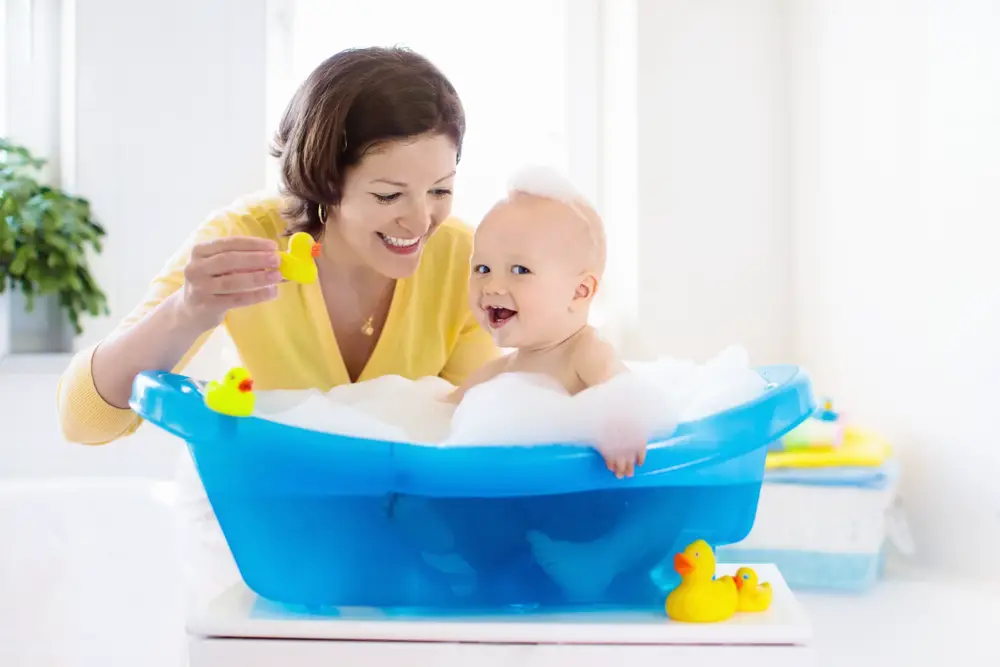 However, you don’t want to wait until too late at night when your little one is more likely to be overtired and fussy.
However, you don’t want to wait until too late at night when your little one is more likely to be overtired and fussy.
Choosing the right time to give your baby a bath is going to depend on many factors that are unique to your family, such as individual work schedules and bedtime preferences. At the end of the day, there is no real right or wrong answer.
You will also need to work around your family’s dinnertime and keep your little one’s feeding times in mind too.
Tips for bathing your baby after feeding
If you decide you want to bathe your baby after feeding, like many parents, here are a few tips to keep in mind for a successful routine.
Bathe your baby after her last feeding
Since bath time tends to make babies sleepy, it makes sense to bathe your little one right before bed. Many parents choose to bathe their baby right after their last feeding of the day.
Depending on your family’s unique needs, this may not work for you.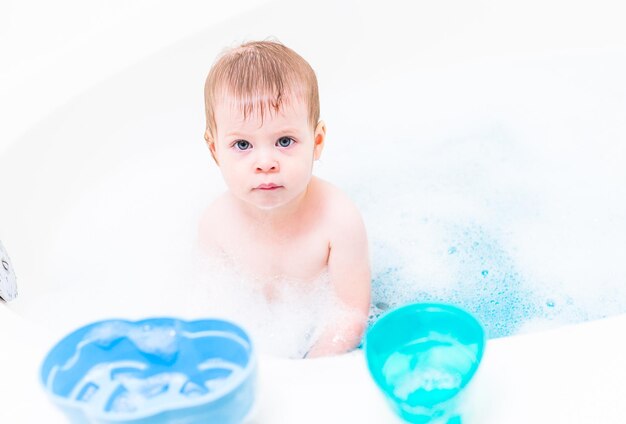 For example, if you nurse your little one to sleep, then bath time needs to occur before the final feeding of the night.
For example, if you nurse your little one to sleep, then bath time needs to occur before the final feeding of the night.
Allow time for burping and digestion
You’ll want to wait at least a little while after feeding before getting bath time started, especially if your baby needs to be burped after each meal, is a newborn, or struggles with reflux.
Allowing time for proper digestion to occur is always a good idea at any age.
Keep temperatures mild
To reduce any potential digestion issues, keep the water temperature lukewarm to help aid with temperature regulation and circulation.
Bundle your baby up quickly after bath time and avoid lingering in the bath long enough for them to get cold.
Consider the tub
Ideally, if you are bathing your little one after a meal, their tub or assistive device will allow your baby to be at least somewhat elevated.
Lying completely flat after a meal is never a good idea, even if your baby isn’t colicky or subject to reflux.
Keep your baby as upright as possible to avoid any potential digestion issues.
Related Questions
When to start bathing baby daily?
The newborn and infant stages are always more difficult to navigate for parents because baby is so young and fragile. Adding water to the mix during a bath only raises the stress level!
Fortunately, you should be able to start bathing your baby daily starting around the 6-9 month mark – around the time they start transitioning to solid foods. At this stage, your baby has better motor control and can more easily sit up in the bath. She might even enjoy it more!
Of course, not all skin types will tolerate a daily bath so don’t feel discouraged if you still need to skip a day. Invest in a high-quality, natural baby wipe to help hold you over between baths.
How often should you bathe your 1-month-old baby?
At one month, your baby’s skin is still quite sensitive and prone to drying out when exposed to too much water, soap, and shampoo.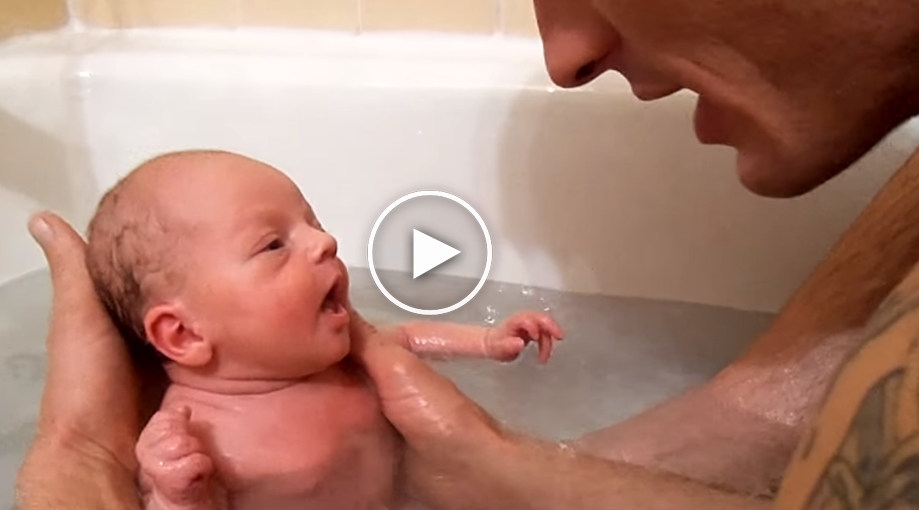
You should typically bathe your 1-month-old baby about 3 times per week, on average.
At this stage, your baby is totally dependent on you to move her around and isn’t likely to make much of a mess anyway. Focus on wiping your baby’s face and neck thoroughly after each feeding to avoid smells and irritation.
How often should you bathe your 2-month-old baby?
At two months, your baby’s skin is probably still sensitive and prone to drying out when exposed to too much soap and shampoo.
You should typically bathe your 2-month-old baby about 3 times per week, on average.
Focus on cleaning up your baby well after each feeding with a high-quality, natural baby wipe to avoid skin irritation and stinky smells!
How to properly bathe a child | Happy Moments
With the advent of a small child in a family, sometimes the simplest things seem incredibly difficult for new parents. Feeding the baby, dressing and hygiene .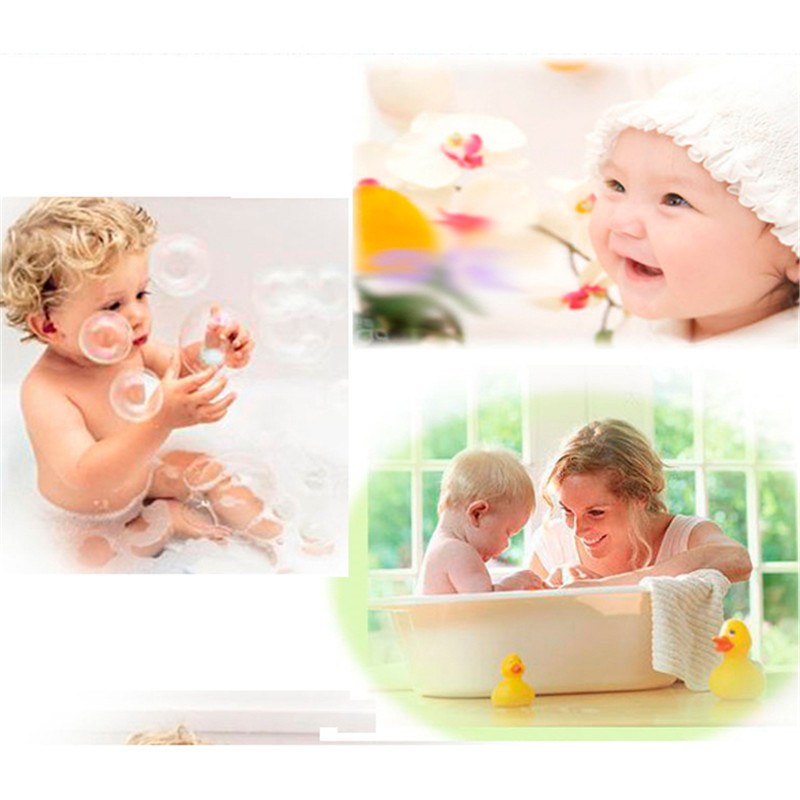 .. And such an event as the first bath turns out to be a whole sacrament for many, requiring special knowledge and skills. However, having mastered this process, very soon both parents and the baby will begin to receive a lot of pleasure, pleasant emotions and benefits from it.
.. And such an event as the first bath turns out to be a whole sacrament for many, requiring special knowledge and skills. However, having mastered this process, very soon both parents and the baby will begin to receive a lot of pleasure, pleasant emotions and benefits from it.
Benefits of bathing
Bathing a child in the bathroom is not just about taking care of children's skin, but also strengthening the immune system. During water procedures, the baby hardens, trains its not yet perfect thermoregulation. The child learns the world, masters a new environment for himself, feels his body differently, and of course, receives positive emotions together with his parents. In addition, taking a bath soothes, relaxes and prepares the baby for sleep. Thus, daily bathing becomes an important stage in the formation of the baby's regimen from the first days of life.
Bathing time
The evening is considered the ideal time for bathing a child. Water perfectly calms, adjusts to a night's sleep.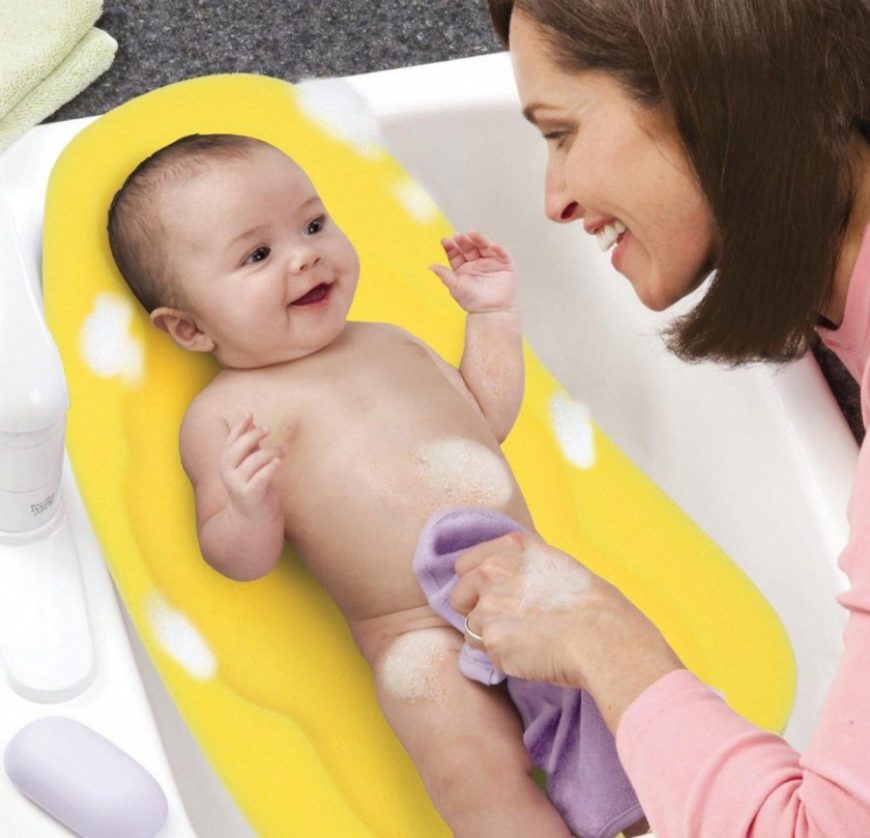 It is important for parents who have chosen this daily routine to create an atmosphere of peace themselves so that the baby does not get overexcited and can sleep peacefully. However, there are children for whom evening bathing is not suitable due to individual characteristics of the regimen: then their parents should bathe him in the morning, choosing the most convenient moment in order to get the maximum benefit and positive emotions from the process.
It is important for parents who have chosen this daily routine to create an atmosphere of peace themselves so that the baby does not get overexcited and can sleep peacefully. However, there are children for whom evening bathing is not suitable due to individual characteristics of the regimen: then their parents should bathe him in the morning, choosing the most convenient moment in order to get the maximum benefit and positive emotions from the process.
Another question that worries many parents is when to wash their baby - before feeding or after? And even pediatricians do not have a clear answer, since the baby himself determines the time for bathing with his mood. If the baby is hungry and crying - taking a bath, of course, should be postponed, after waiting some time after feeding (especially if the baby is bottle-fed, because mixtures are digested longer than breast milk).
Preparation for bathing
Most parents prefer to wash their newborn baby in a plastic baby bath with a little water in it. Beforehand, the bath must be thoroughly cleaned and disinfected by dousing with boiling water. For the first baths of a newborn, it is recommended to use cooled boiled water, or add a weak solution of potassium permanganate to the tap.
Beforehand, the bath must be thoroughly cleaned and disinfected by dousing with boiling water. For the first baths of a newborn, it is recommended to use cooled boiled water, or add a weak solution of potassium permanganate to the tap.
The optimal temperature to start swimming is 33-34 degrees. If you have not had time to get a water thermometer, you can make sure that the water is at the right temperature by dipping your elbow into the bath.
The air temperature in the room should also be comfortable: you need to make sure that there are no drafts in the room, but you shouldn’t close all the doors either, so that later on leaving the stuffy bath you don’t create sudden temperature changes for the baby.
Prepare a bucket of warm water for rinsing your baby, a diaper and a large towel to wrap your baby up after bathing. Before you wash your baby, prepare clean clothes, cotton swabs, a clean diaper, and baby skin care products.
Baby bath products
Modern baby bath products can be used from the first days of life.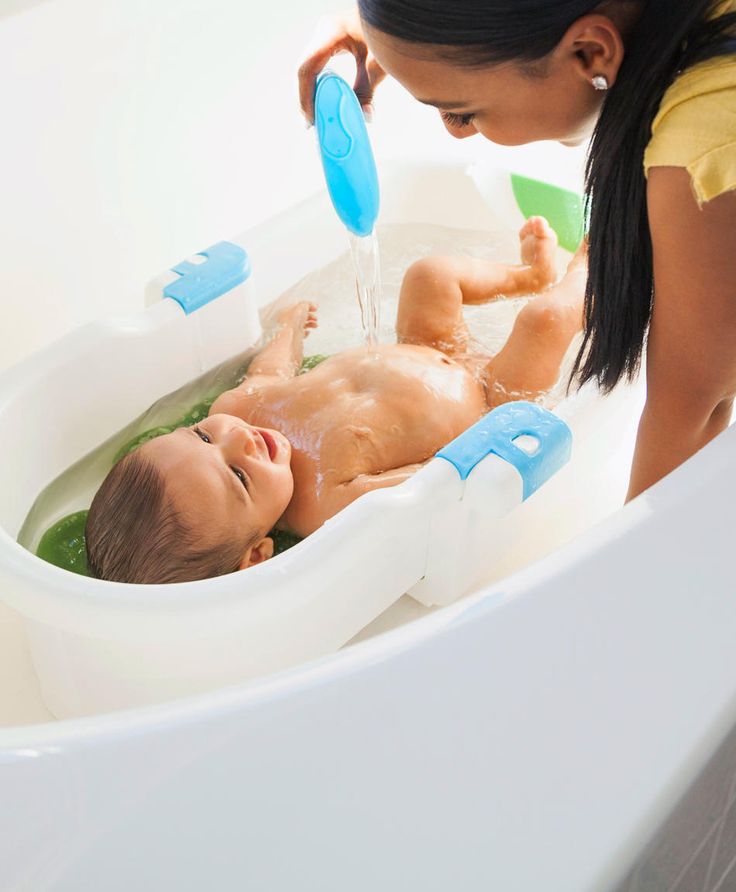 Baby soap and shampoo should have a special pH level that suits the delicate and sensitive skin of the baby, be sure to be hypoallergenic, and do not contain harmful fragrances. Pediatricians recommend using soap or foam for bathing very young children no more than 1-2 times a week. Shampoo your child's hair once a week. On other days, it is enough to bathe the baby in clean water. If necessary, a decoction of chamomile, calendula or string can be added to the water: this is especially true when irritation or prickly heat appears on the child's skin.
Baby soap and shampoo should have a special pH level that suits the delicate and sensitive skin of the baby, be sure to be hypoallergenic, and do not contain harmful fragrances. Pediatricians recommend using soap or foam for bathing very young children no more than 1-2 times a week. Shampoo your child's hair once a week. On other days, it is enough to bathe the baby in clean water. If necessary, a decoction of chamomile, calendula or string can be added to the water: this is especially true when irritation or prickly heat appears on the child's skin.
Bath sequence
Before bathing your baby, make sure the bath is at a height that is comfortable for you. Then fill the bath with warm water, if necessary, add bathing foam or herbal decoction to it. Check the temperature of the water with a thermometer or touch it with your elbow. Place a bucket of hot water next to the bathtub to add to the bathtub as it cools. Gently submerge the baby in the water, leaving the head on the surface, placing a pillow from a folded towel or diaper under it. Water the baby with warm water, washing hands and feet alternately, using soap if necessary. The newborn also needs to wash all the folds, the spaces between the fingers, the armpits. Wash your child's head last. For greater comfort, you can bathe the child by first wrapping it in a thin diaper so that it does not get cold. If you have used a baby bath, be sure to rinse it with clean, warm water. After that, blot your baby with a well-absorbent diaper, then wrap it in a large bath towel.
Water the baby with warm water, washing hands and feet alternately, using soap if necessary. The newborn also needs to wash all the folds, the spaces between the fingers, the armpits. Wash your child's head last. For greater comfort, you can bathe the child by first wrapping it in a thin diaper so that it does not get cold. If you have used a baby bath, be sure to rinse it with clean, warm water. After that, blot your baby with a well-absorbent diaper, then wrap it in a large bath towel.
Bathing a baby usually lasts no more than 5-10 minutes. A baby who already knows how to sit can spend more than half an hour in the bathroom, playing with toys and having fun.
After bathing, wipe the baby's ears with a cotton swab soaked in water, dry with a clean diaper and treat the skin folds with a special product. Wipe the eyes with a cotton swab from the outer corner to the inner. Dress your child in clean sleepwear.
all about the correct and comfortable bathing of the baby
After returning from the hospital, mother and baby get acquainted with the new order of life. The first bath of a newborn is especially exciting, because there are so many things to take into account: heat the bathing water to the right temperature, choose the foam, properly lay the baby. We will analyze the most frequent questions of young parents about how to bathe a baby, in what water and for how long, so that the procedure is calm and pleasant.
The first bath of a newborn is especially exciting, because there are so many things to take into account: heat the bathing water to the right temperature, choose the foam, properly lay the baby. We will analyze the most frequent questions of young parents about how to bathe a baby, in what water and for how long, so that the procedure is calm and pleasant.
Even during pregnancy, parents should prepare the bathroom. Your home should have:
bath tub
Plastic slide or hammock for swimming in the tub
Small mug or ladle for rinsing
Thermometer to check if the water is hot enough
Soft clean towels or diapers
HTML comment
Bath soaps, foams and shampoos
Why is bathing a newborn baby more than just hygiene?
Each contact with water for a child is a new emotional experience and an important procedure for strengthening immunity. Bathing allows:
- take care of your child's skin regularly;
- train the thermoregulatory function of the baby's body;
- let the child explore the world through interaction with water;
- to calm the baby, which is especially valuable before going to bed;
- experience a special act of closeness between a child and parents.
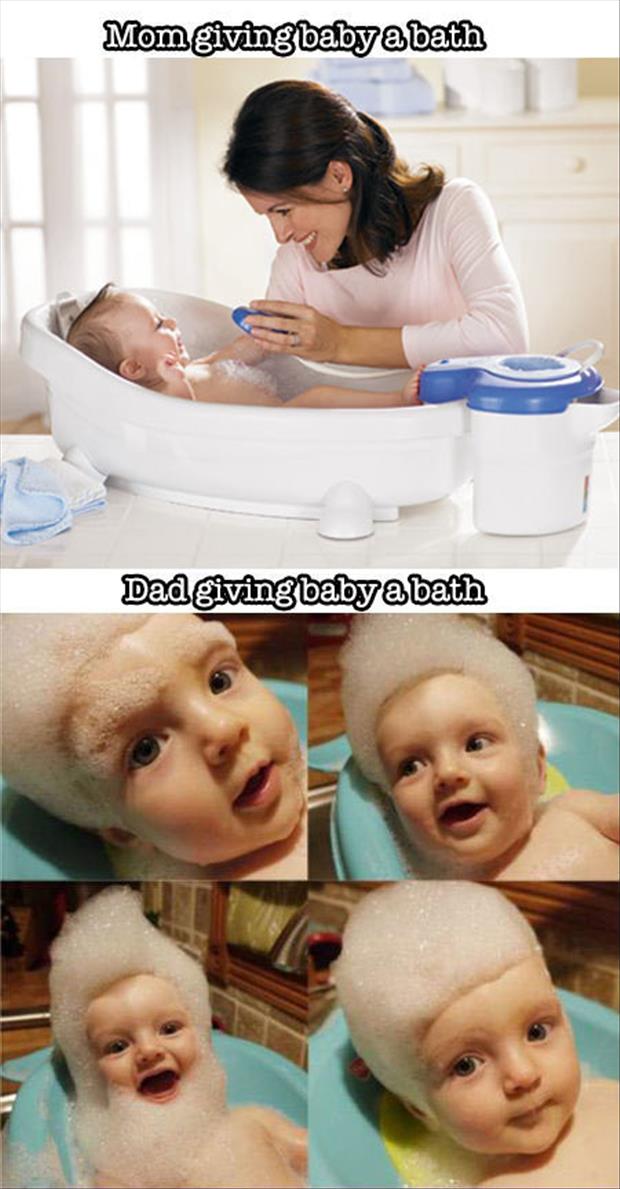
Should I bathe a child with an umbilical wound and how often should I take a bath?
Some pediatricians do not advise bathing the baby in the bath until the umbilical wound heals (usually this process takes two to three weeks), and suggest that parents get by with wiping with a damp cloth or special wipes. For example, baby wipes "My sun" are suitable, which can be used from the first day of life. Of course, in this case, you still need to wash the baby - to do it right, read the article "intimate hygiene of the newborn."
Other experts, on the contrary, suggest starting bathing on the first day after discharge. Parents themselves need to choose when the baby begins to take water procedures. It is better to rely on the recommendations of your pediatrician.
In Soviet times, many parents preferred to bathe their babies from the first days of life, adding a weak solution of potassium permanganate. With any additives, be it potassium permanganate or herbs, you need to be extremely careful. Sometimes potassium permanganate crystals do not completely dissolve under the influence of water and cause burns on the skin of a newborn. It is much safer to replace the manganese solution with a weak infusion of string, and even better with cosmetics with natural herbal extracts.
Sometimes potassium permanganate crystals do not completely dissolve under the influence of water and cause burns on the skin of a newborn. It is much safer to replace the manganese solution with a weak infusion of string, and even better with cosmetics with natural herbal extracts.
When is it absolutely impossible to arrange water procedures?
If the baby is sick and is experiencing an acute period of illness and feels unwell. The doctor will advise when to resume full-fledged hygiene procedures, and will allow you to bathe when the baby begins to recover. In this case, you can bathe the child at a temperature if he feels well.
How often to bathe a newborn up to a month old
It is important to keep clean throughout the day. But pediatricians recommend bathing a baby with foam once or twice a week. In the period up to a year, two or three baths a week are enough.
How will the procedure for bathing a newborn change with age?
Many parents swaddle a child under the age of one and a half months before bathing.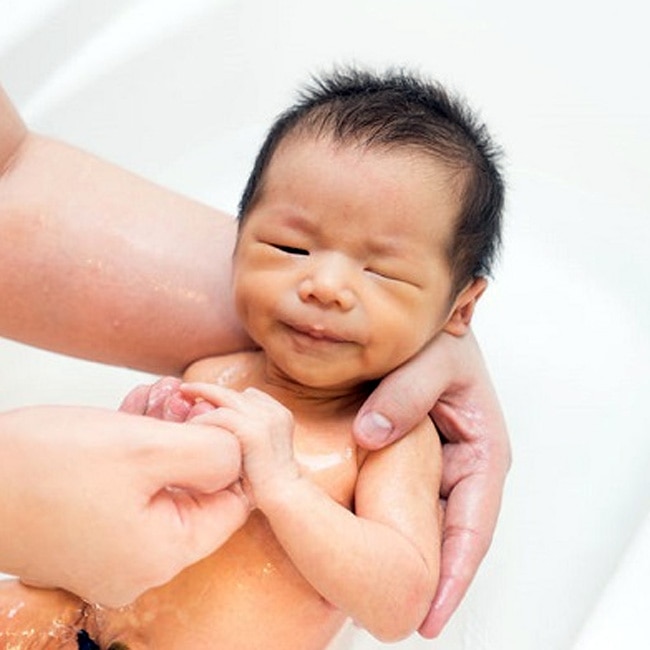 So the baby will be easier to tolerate the difference in air and water temperatures.
So the baby will be easier to tolerate the difference in air and water temperatures.
In the period from one and a half to three months, the baby can bathe, lying in a baby bath with a small amount of water at a temperature comfortable for him (on average - 37-38 degrees).
From three months, when the baby becomes more mobile, parents can practice bathing together in a large bath. At the same time, you can purchase an inflatable ring for the baby.
A child older than six months is interested in actively exploring the world and playing with water. For bathing at this age, a special chair is useful. So the game is combined with useful procedures.
Newborn bath temperature
It is important for parents to adjust the temperature of the water and air in the room. Optimally - warm up the room to 24-26 degrees before the first bath. The easiest way is to turn on hot water for a few minutes. It is important to observe such a ratio of water and air temperatures in order to protect the baby from a cold.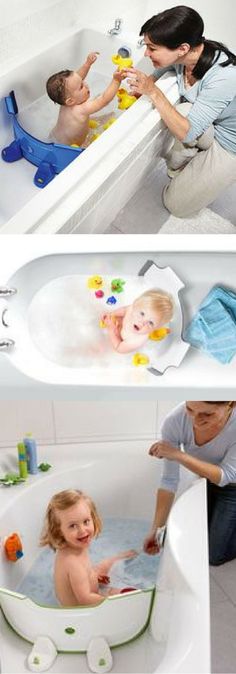 Before bathing, it is also worth checking all windows and doors so that there are no drafts in the rooms where the child will be brought in. Then you need to prepare a bath with warm water, about 37 degrees. This temperature is as close as possible to the temperature of the amniotic fluid of the mother, so the baby will feel comfortable.
Before bathing, it is also worth checking all windows and doors so that there are no drafts in the rooms where the child will be brought in. Then you need to prepare a bath with warm water, about 37 degrees. This temperature is as close as possible to the temperature of the amniotic fluid of the mother, so the baby will feel comfortable.
What is the best way to check whether the water has warmed up enough or is it worth adding more boiling water?
The most reliable way is to control the water temperature with a special thermometer. You can also use the “elbow method” to check if the temperature is suitable for bathing a child. For an older baby, you can buy a thermometer-toy with which the baby will splash.
It may turn out that your baby likes cooler water or vice versa, prefers a warm bath. Over time, try changing the temperature by 1-2 degrees to see how the child likes it more. If the baby began to cry, stop and check if the temperature regime is disturbed.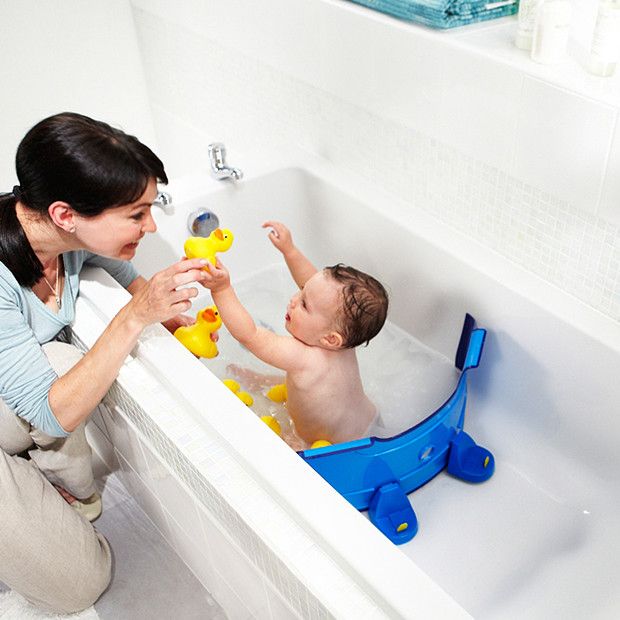 If the water is too hot, the baby's skin will quickly turn red. And if his water temperature is below normal, then he will reflexively clench his fists, the skin will turn pale.
If the water is too hot, the baby's skin will quickly turn red. And if his water temperature is below normal, then he will reflexively clench his fists, the skin will turn pale.
How much time should I devote to bathing?
For the first time, you should not bathe a newborn baby for more than 5-10 minutes. Gradually increase the time of bathing, focusing on the mood of the baby. If the baby easily spends 20-30 minutes in water, do not rush him: water procedures are useful for the emotional and mental development of the baby.
Why should a baby have its own bath tub?
Many parents think about what to bathe a newborn in - in a shared bath, a basin or in a special bath? We recommend bathing your newborn in a bath.
There are several objective reasons for this. First of all, in a small space, the baby will feel more comfortable. In addition, a small bathtub is easier to fill with warm water even in the season of water supply interruptions. Bathing a baby in an adult bathroom is not as hygienic as it is harder to keep clean. In the meantime, the child's fragile health and susceptibility to environmental influences do not allow him to use a common large bathroom.
In the meantime, the child's fragile health and susceptibility to environmental influences do not allow him to use a common large bathroom.
It is better to buy a bath for a newborn in a specialized children's store - so you will be sure of its quality. The optimal size is from 65 cm. Pay attention to the anatomical baths: they are more convenient to use, because the bottom is placed at an angle and the baby's head always remains above the water, there is no need to build additional pillows from towels or diapers.
Before the first bath, you should thoroughly wash the walls and bottom with a disinfectant: it is best to choose baby soap. It is also worth pouring boiling water over the bath. After that, you need to fill the container with water by one third (⅓), over time, for convenience, you can hook a hammock or install a slide.
How to bathe a baby in a comfortable way?
Prepare boiled water at the right temperature, and also prepare all the necessary items: bathing fluid, towel, clean diaper, creams and clothes.
When everything is ready, undress the newborn.
Do not rush to immediately lower the child into the water: wet the arms and legs first, let them get used to it.
Rub the bathing product from the My Sunshine line on your palms and lather the baby with gentle movements. Gently clean the folds of the skin.
Wash off the foam with a ladle or mug.
Wrap the baby in an ironed towel or diaper. Synthetic or terry towels will not work. Blot the skin from the heels to the top of the head.
Swaddle your baby or put on a romper and a vest.
Should I bathe my newborn before or after feeding?
There is a misconception that a significant amount of time must pass from the moment of feeding to bathing. This is not true. In fact, deciding when to bathe a newborn - before or after meals - should be based on the convenience of the parents. It is absolutely safe to feed your baby before bathing. Feed the baby and within a few minutes after feeding you can bathe him.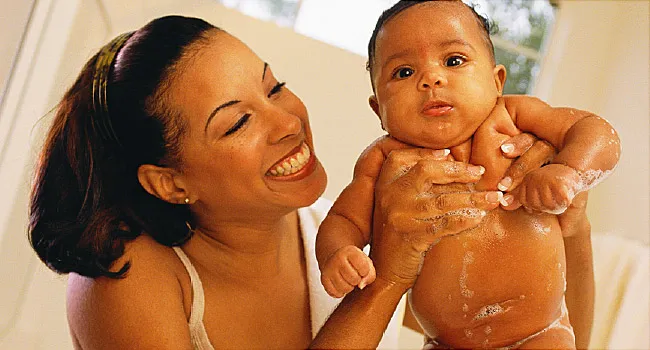
Another question is whether your baby will be comfortable splashing in the water immediately after eating. The behavior of children is purely individual: alone, without a tight snack, they cannot relax in the water; others, on the contrary, find it easier to swim with a feeling of lightness in the tummy. How best for your baby, practice and observation will show.
So the question of whether it is possible to bathe a child after feeding is decided purely individually.
How many hours before bedtime should I bathe?
And in this matter, everything is exclusively individual. It depends on the nature of the baby. Superactive children are recommended to bathe 2-3 hours before bedtime, calm children - about an hour. To give your baby a chance to relax, you can try bathing your newborn in a row. But this mode is not universal: it may turn out that your child will love morning baths.
We bathe a child, and he is constantly crying - what should I do?
If the baby is naughty and indignant every time, this is worth paying attention to. Most likely, the problem is not in the baby, but in the conditions in which the procedure takes place. Maybe the water is too hot or too cold. Maybe he does not like water procedures in a diaper. Or vice versa, it is worth trying this method to make it feel more comfortable. When bathing a newborn, try gradually heating or cooling the bath, add water in a thin stream.
Most likely, the problem is not in the baby, but in the conditions in which the procedure takes place. Maybe the water is too hot or too cold. Maybe he does not like water procedures in a diaper. Or vice versa, it is worth trying this method to make it feel more comfortable. When bathing a newborn, try gradually heating or cooling the bath, add water in a thin stream.
If you have always arranged water procedures before bedtime, try moving them to the first half of the day. Perhaps the baby wants to sleep more peacefully in the evening, and not flounder in the water. Also try to change the order of eating and hygiene procedures. Be more attentive and sociable with the baby while bathing him. Any of these important points can affect the mood of the baby during a visit to the bathroom.
How to choose baby bath products?
The main rule is to choose proven products with a mild pH that are suitable for baby's delicate skin. Using this advice, many mothers choose shampoos and foams from the My Sunshine series, which cleanse the skin and hair of the child much more gently.